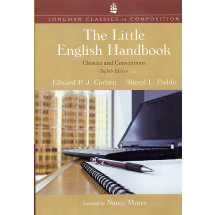Preface.
Introduction.
I. UNDERSTANDING SENTENCES.
1. The Structure of Sentences.
The Two-Part Sentence.
The Expanded Verb.
Sentence Patterns.
The Optional Slot.
The Passive Voice.
"Clause" and "Sentence".
Punctuation and the Sentence Patterns.
2. Cohesion.
Reader Expectation.
The Known-New Contract.
The Role of the Passive Voice.
Metadiscourse.
Parallelism.
Levels of Generality.
3. Sentence Rhythm.
Intonation: The Peaks and Valleys.
End Focus.
Controlling Rhythm.
Rhythm and the Comma.
Power Words.
4. The Writer's Voice.
Tone.
Diction.
Metadiscourse.
Point of View.
5. Coordination.
Coordination Within the Sentence.
Compound Sentences.
The Compound Sentence: Punctuation Review.
6. Brevity and Subordination.
Brevity.
Subordination.
II. MAKING CHOICES.
7. Choosing Verbs.
Showing, Not Telling.
The Overuse of Be.
Verbs and Grammar.
The Abstract Subject.
8. Choosing Adverbials.
The Opening Adverbial.
The Prepositional Phrase.
The Subordinate Clause.
Infinitive (Verb) Phrases.
Movability and Closure.
The Qualifiers.
9. Choosing Adjectivals.
Determiners.
Adjectives and Nouns.
Prepositional Phrases.
Participle Phrases.
Relative Clauses.
The Broad-Reference Clause.
Other Nominals.
Punctuation Revisited.
10. Choosing Appositives and Absolutes.
Appositives.
Absolute Phrases.
Key Words.
11. Choosing Stylistic Variations.
The Coordinate Series.
Repetition.
Word-Order Variation.
Ellipsis.
Antithesis.
The Deliberate Fragment.
III. A WAY WITH WORDS.
12. Word Classes.
Lexical Rules.
Parts of Speech.
The Form Classes.
13. Pronouns.
Personal Pronouns.
Personal Pronoun Errors.
Reflexive Pronouns.
Reciprocal Pronouns.
Demonstrative Pronouns.
Indefinite Pronouns.
V. Punctuation.
14. Punctuation: Its Purposes, Its Hierarchy, and Its Rhetorical Effects.
The Purposes of Punctuation Marks.
The Hierarchy of Punctuation.
The Rhetorical Effects of Punctuation.
Glossary of Punctuation.
Glossary of Terms.
Bibliography.
Answers to the Exercises.
Index.












